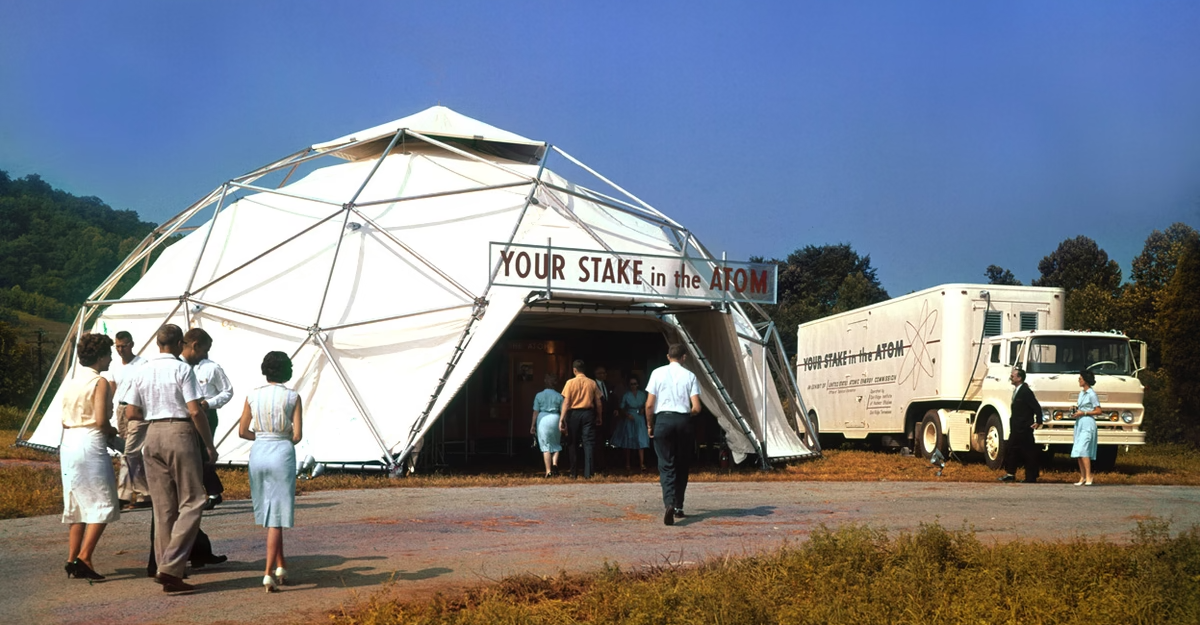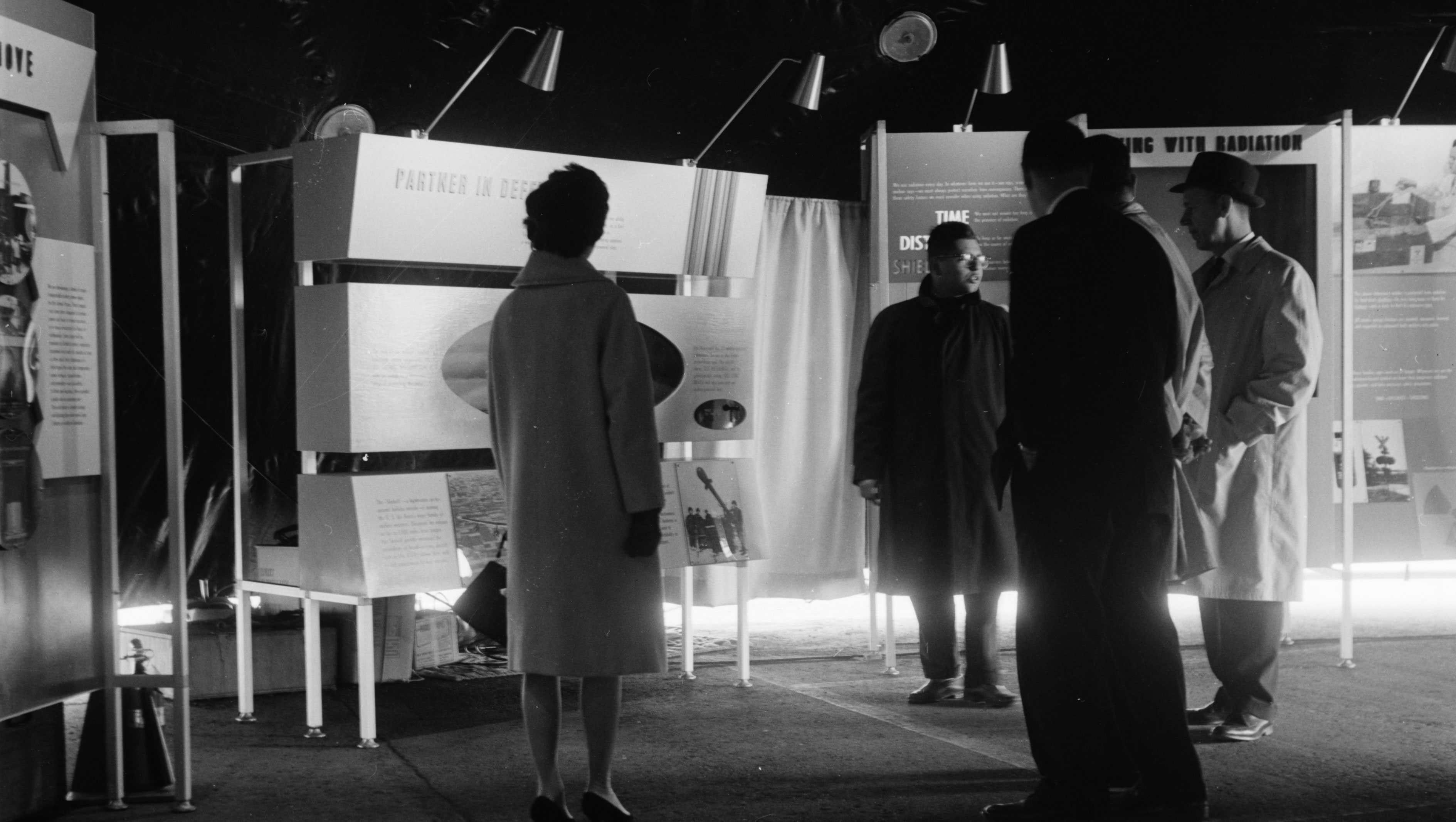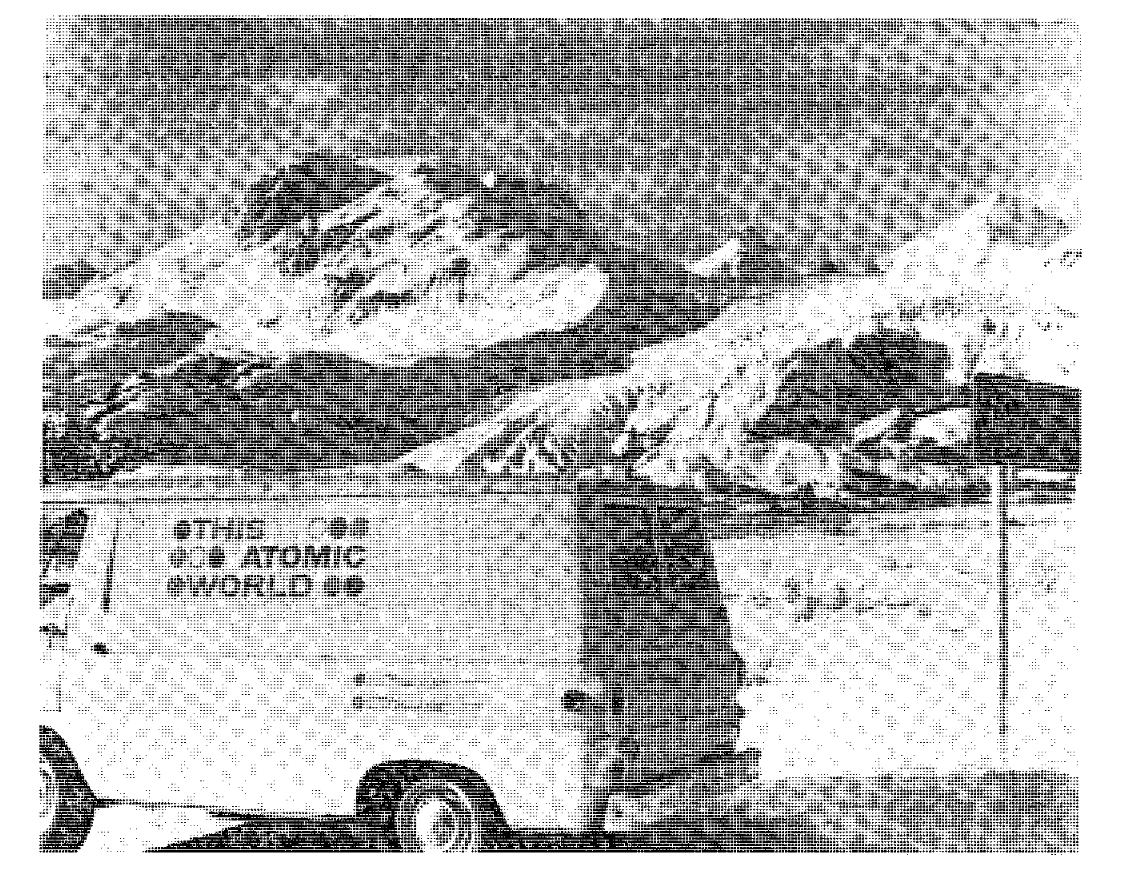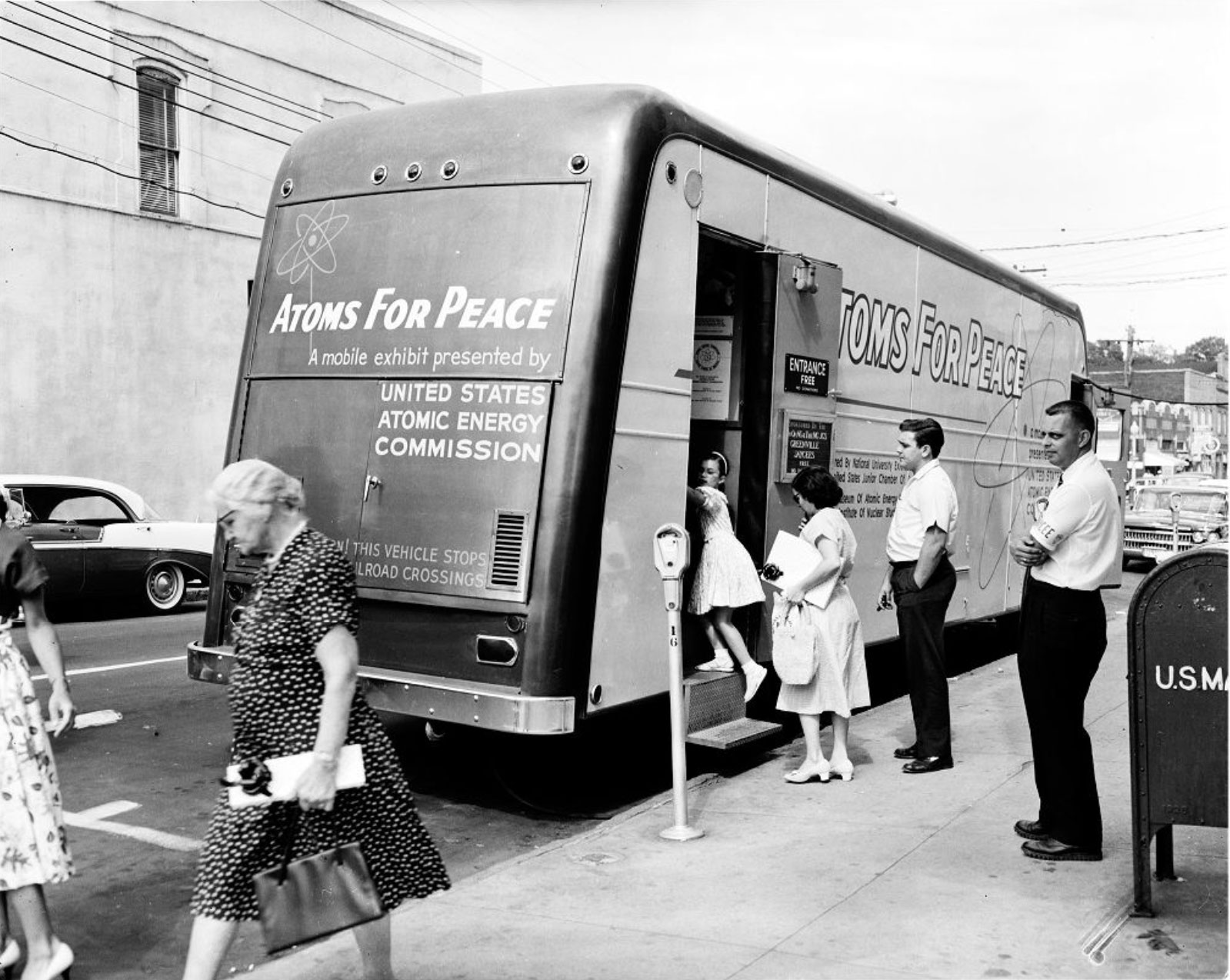A Look Back at Traveling Nuclear Exhibits
— and Where We're Headed Next

In the aftermath of World War II, Americans were understandably anxious about atomic technology, having witnessed its devastating use in Hiroshima and Nagasaki. Yet President Dwight D. Eisenhower—who had led the Allied forces on D-Day—believed nuclear power could foster peace rather than war.
At a time when newspapers, radio, and television could have delivered the government's message, his administration instead embraced face-to-face outreach: traveling exhibits that literally met people where they lived.
Traveling Exhibits in the 1950s-60s
In the 1950s, the U.S. Atomic Energy Commission (AEC) launched three separate traveling programs:

- Your Stake in the Atom
A geodesic-dome exhibit transported by truck to fairs, shopping centers, and other public venues. Inside the dome, visitors could operate robotic "hot-lab" arms to simulate the safe handling of radioactive materials and watch live demos of nuclear science in action. During a single regional tour, tens of thousands of people would often visit within just a few months. [1]
- This Atomic World
A high-school lecture and demonstration tour that eventually deployed up to 23 specially equipped vans across the country. Each mobile unit carried live demonstration gear (reactor models, Geiger counters, cloud chambers) to engage students with hands-on science. At the program's peak in the early-to-mid 1960s, it visited thousands of schools, reaching over a million students per year. [2] - Atoms for Peace
An umbrella initiative that included traveling trailer exhibits in the U.S. and large-scale international showcases abroad. One such American trailer traveled to libraries and local fairs, featuring scaled models of reactors, interactive panels, and displays of atomic agriculture. Collectively, the AEC's Atoms for Peace projects reached hundreds of thousands — ultimately millions — of curious visitors who learned about nuclear energy's peaceful potential. [3]
These mobile exhibits complemented larger-scale stationary showcases, such as Atomsville, U.S.A. at the 1964–65 New York World's Fair—a futuristic vision of a nuclear-powered American town.

What's Next: The Roving Reactor Project
That tradition of direct engagement lives on in the Roving Reactor. We believe honest dialogue happens best when people can see and question new technologies up close. Our traveling exhibit highlights modern innovations—from small-scale reactors to ultra-safe fuel—showcasing how they can strengthen energy security and protect the planet.
By bringing these technologies directly to communities nationwide, we won't just foster dialogue—we'll strive to update perceptions, spark curiosity, and inspire the next generation of scientists, engineers, and a skilled workforce ready to drive the future of nuclear energy.
- "Your Stake in the Atom" Dome Exhibit
- Taylor, Alan (2012). The Secret City, The Atlantic. Photo essay by Ed Westcott showing the geodesic dome in Oak Ridge, 1966.
- McHenry Plaindealer, 26 July 1968, p.4. Mentions "Your Stake in the Atom" touring fairs, attracting tens of thousands of visitors.
- "This Atomic World" Reach:
- ED046215, ERIC (1970). Opportunities for Extending Science Education Through Demonstrations. Describes 23 traveling vans, reaching over a million students per year.
- ORAU History (1969). Atomic Industrial Forum Award for 'This Atomic World' - recognized for "entertainingly informing millions of high school students.
- Atoms for Peace Travel Exhibits:
- Brooklyn Public Library Blog (2022). POTW: Atoms for Peace and Goodbye, Central Library. Features a 1950s photo of the traveling trailer parked outside the library.
- Zwigenberg, Ran (2012). "The Coming of a Second Sun": The 1956 Atoms for Peace Exhibit in Hiroshima. Asia-Pacific Journal: Japan Focus. Documents extensive attendance and public reception.